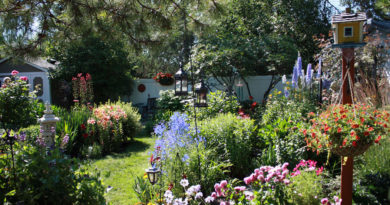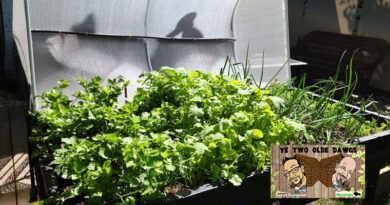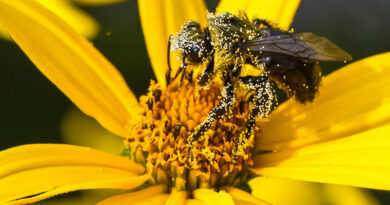Different Types of Mulch
The many facets of Mulch
Mulch is a material that covers the soil and/or plants. When spread on soil in summer it preserves moisture, keeps weeding to a minimum and maintains a constant soil temperature. In late fall and winter it covers the roots and sometimes stalks of tender plants, protecting them from the extreme cold and changing temperatures.
It can be many different materials, some being organic, others man-made. Cost, availability, aesthetics, ease of use are all important when choosing a mulch.
Mulch is not completely maintenance free. Dust, dirt and seeds will blow into any mulch. It is important to remove weeds as soon as they germinate to keep the mulch pristine.
Peat moss
Peat moss works best in vegetable gardens, annual and perennial beds given that the plants will keep the peat moss in place. Works well as a winter mulch. It is best to mix in soil or with another mulch such as straw or grass clippings.
Advantages
- Readily available in two or four cubic foot bails
- Light weight and easy to spread
- Improves soil structure
- Absorbs and holds moisture
- Easy to work into the soil
- Rarely weedy
Disadvantages
- Light weight; blows in the wind if it is dry
- Hard to moisten once it becomes dry
- It is widely considered a non-renewable resource, though new peat accumulates naturally in more than replacement amounts
Coconut fiber or chips
Coconut husk is starting to replace peat moss. Like peat moss, it insulates plants during the winter months. It is best to incorporate in soils that need hydration and in containers.
Advantages
- Light weight and easy to spread
- Improves the soil structure
- Absorbs and holds moisture – up to three times as much as peat.
- Easy to work into the soil
- Never weedy
- Breaks down very slowly (five to seven years)
- A renewable resource
- Winter mulch can be worked into the soil
- Easier to rehydrate than peat moss
Disadvantages
- Light weight and blows in the wind if it is dry
- Expensive unless recycled from a hydroponics operation
- Not always available
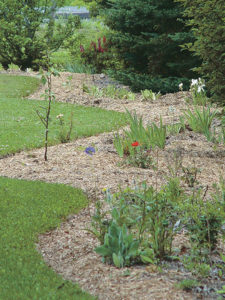
Wood chips
Wood chips are ideal for spreading around shrubs, trees and long-term perennials.
Advantages
- Readily available from sawmills, pruning companies or garden centres
- Easy to spread
- Can rent or purchase chippers to produce your own product
- Can be spread thickly to keep weeds out
- Small chips will break down producing humus
- Attractive
Disadvantages
- Small chips will break down and need to be refurbished
- When chips decompose they use the nitrogen in the soil, slowing plant growth
- After a number of years the chips pack, making it hard for water or air to penetrate
- Larger chips sold in bags are expensive
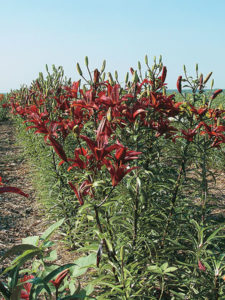
Straw
Straw is often in market gardens or vegetable gardens between rows of produce or around fruit and melons to keep the produce clean. Can also be a winter mulch.
Advantages
- Inexpensive
- Keeps produce clean
- Can be dug into vegetable bed soil in the fall
Disadvantages
- Straw can contain weed /grain seeds
- Unsightly
- Grain seeds attract rodents
- Wet straw can become moldy
Compost
Compost can be used around any plant.
Advantages
- Easy to spread
- Improves the soil structure
- Adds nutrients to the soil
- Absorbs and holds moisture
- Easy to work into the soil
- Easy to make
Disadvantages
- Contains weed seeds
- Can be hard to find
- Often expensive
- Requires room to make
- Nutrient content unknown
Manure
Manure must be well rotted before being applied to the garden. Green manure has obvious odour and the urea content will burn plants. Well-rotted manure from domestic animals can be used around any plants. Manure can also be used as winter mulch.
Advantages
- Readily available in bulk or bag
- Easy to spread
- Improves the soil structure
- Adds nutrients to the soil
- Absorbs and holds moisture
- Winter mulch can be worked into the soil
- Easy to work into the soil
Disadvantages
- Contains weed seeds
- Not always constant texture
- Nutrient content is often unknown
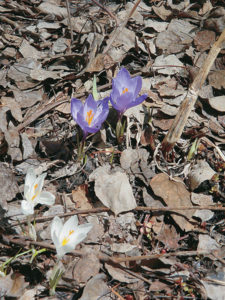
Leaves
Leaves are often a cover tender plants during the winter.
Advantages
- Free for the taking
- Do not attract rodents or pests
- Can be composted in the spring
- Light and easy to move
Disadvantages
- Light and blow away
- Take nitrogen away from plants during the growing season if not thoroughly rotted
- Bulky
Grass clippings
Grass clippings can be used around most plants and as winter mulch.
Advantages
- Inexpensive/free
- Constant supply
- Will quickly form a mat, blocking out the most obnoxious weeds
Disadvantages
- Care needs to be taken not to use sprayed grass
- Not pleasing to the eye
- Attracts pests
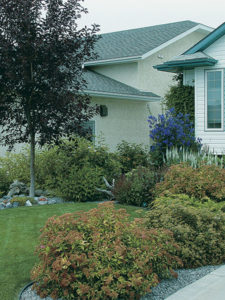
Rocks
Rocks or gravel are used extensively as ground cover in commercial landscaping. Homeowners use it to mulch tree and shrub beds.
Advantages
- Attractive
- Comes in several different colours and sizes
- Never breaks down
Disadvantages
- Traps the heat
- Heavy to work with
- Hard to weed
- Needs to be placed on a barrier or it will sink in the soil
- Expensive
- Does not condition the soil
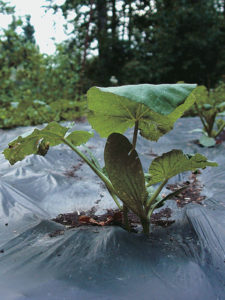
Biodegradable Weed Barrier
This is a commercial product, primarily from corn products and not the plastic that breaks into small plastic particles that stay in the soil forever. Biodegradable Weed Barrier comes in rolls and can be easily used in vegetable and annual beds. It only lasts a season, which makes it impractical for perennials, trees and shrubs.
Advantages
- A great weed barrier
- Warms the soil
- Can be dug into the soil or a compost pile
Disadvantages
- Does not stand up to traffic
- Needs to be stretched smooth or it breaks down quickly
- Must be replaced each spring
- Only ordered from specialty houses
- Does not let air or water penetrate the surface
- Does not add nutrients to the soil
Paper
Paper is usually in combination with another material.
Advantages
- Usually free for the taking
- Makes an excellent weed barrier
Disadvantages
- Not pleasing to the eye
- Can become messy if not covered by another material
- Tears easily when wet
- Needs to be in combination with another mulch
- Chemicals in the ink can be a problem
- Must be wet when applied
Landscape fabric
Quality differs between types and brands of landscape fabric. It is important to purchase one with a tight weave so then it will not let the light penetrate. Even so, before installing the fabric, eliminate all perennial weeds first. Landscape fabric is usually a barrier under rock or wood chips.
Advantages
- Allows air and water to penetrate.
- Works as a weed barrier
- Readily available
- Lasts for many years
- Pleasing to look at when used with chips or rock
Disadvantages
- Can be expensive
- Quality varies with brand
- Will not block perennial weeds
- Breaks down quickly when exposed to the sun
Plastic
Plastic is often under rock or wood chips to work as a weed barrier. Thin plastic can cover the ground to warm up the soil in the spring thus protecting tender plants from spring frosts. Thicker plastic is usually in between rows in the garden or orchard to keep weeding and tilling to a minimum.
Advantages
- Heats the ground
- Keeps in moisture
- Effective barrier against weeds
- Fairly economical
- Readily available
Disadvantages
- Needs to be under another material or it rots in the sun
- Water and air can not penetrate the surface
- Does not add nutrients to the soil
- Small pieces will become part of the soil afterwards
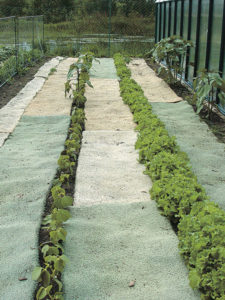
Carpet – jute-backed
Recycled jute-backed carpet works as an effective weed barrier. Generally works best between rows in a vegetable garden or orchard.
Advantages
- Allows water and air to penetrate
- Often free for the taking
- Will last more than one season
Disadvantages
- Not always pleasing to the eye
- Chemicals eventually leach out of the carpet
- Bulky to move and store




